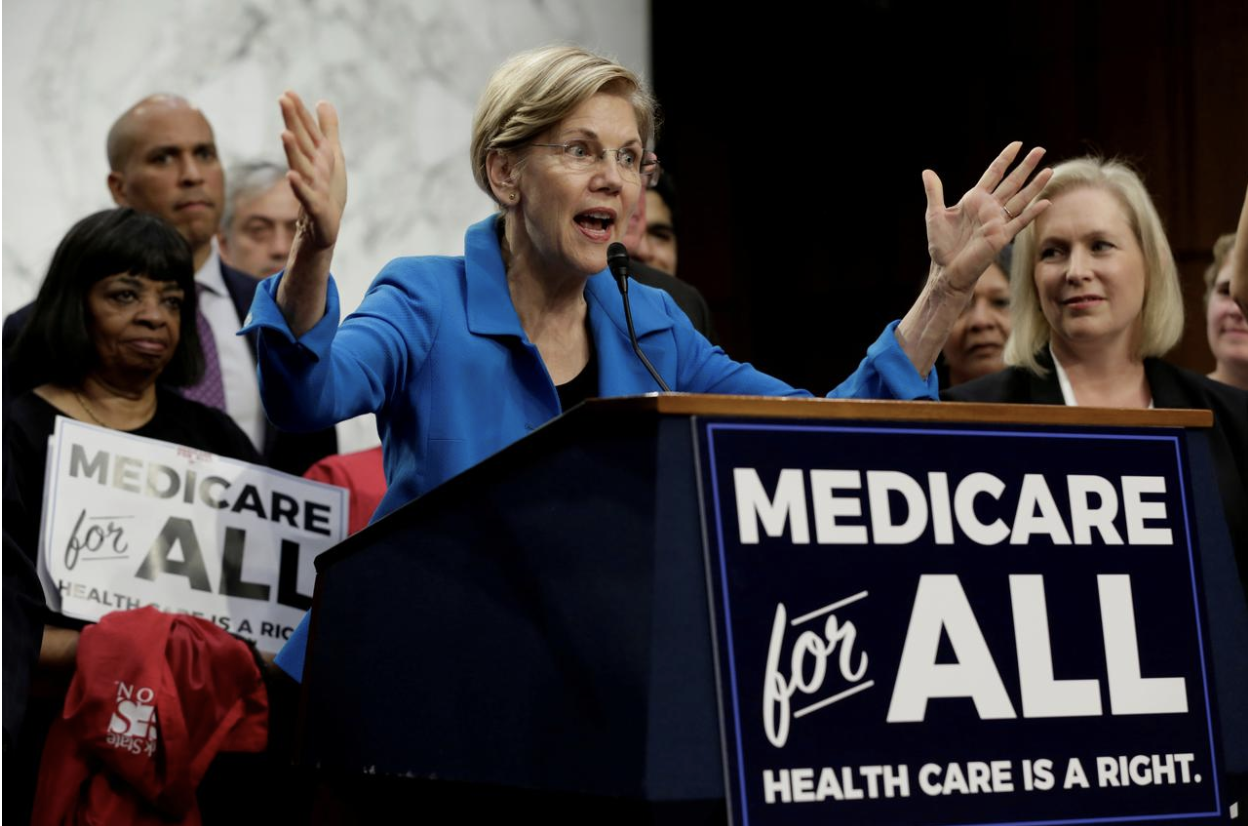
ANI BANERJEE – MARCH 17TH, 2021
EDITOR: KAREENA HARGUNANI
The Tax Code And You
Let’s start at the beginning: in 1954. When the 83rd US Congress introduced the concept of accelerated depreciation into the tax code. For the most part, however, the 83rd Congress forgot to introduce that concept to the American people, so it never quite entered the lexicon of financial terms that got thrown around by the average layperson the same way subprime mortgage and short squeeze have.
Accelerated depreciation is primarily an accounting term used to indicate that an asset’s value depreciates faster in its earlier years than later: imagine a shape sort of like a curvier L. (Or, if you’re mathematically minded, a shape with both a negative first and second derivative.) This contradicts the common intuition about capital depreciation; usually, things run fine for a while, then start breaking down all at once. However, certain types of capital can be claimed and classified as depreciating at an accelerated rate, allowing companies to defer on taxes.
Imagine you are a company with a piece of machinery, or capital, worth 100$ and expected to last 10 years. You can claim its value as an expense on your tax forms, but not immediately. Instead, you have to claim it as an expense incrementally—as 10$ a year—as it depreciates until it is unusable. Since companies must pay taxes on profits, or revenue minus expenses, the higher that depreciation is, the lower your reported profits are for that year and ultimately, the less you have to pay in taxes that particular year.
This doesn’t mean that a company with assets subject to accelerated depreciation is paying less in taxes than one with assets that depreciate normally. Identical companies that differ solely in the status of their assets over that 10 year period would still pay the same dollar amount in taxes. However, the former would claim all of that depreciation in the first 5 or so years, paying much less in taxes compared to the “normal” company in that time frame. During the second 5 year period, it would have no claimed expenses, making up the difference in profit taxes then.
Though both companies would pay the exact same amount at the end of the 10 years in profit taxes, there is still an advantage to possessing assets undergoing accelerated depreciation. Due to the time value of money, a widely accepted conjecture in economics states that it is better to receive the same sum of money now than at a later date. Thus, a logical company would seek to maximize the money it has in the present, deferring payments to the future. Then, investing that saved income can result in a tidy profit.
This is where malls come in: when this amendment was added to the tax code in the 50s and 60s, real estate values were going up—especially in the suburban fringes. Because the accelerated depreciation loophole only applied to recently built structures, investors would build shopping malls on land appreciating in value, claiming their losses as they went, only to sell the project at a tidy profit once finished. It wasn’t income either: that pre-depreciation revenue, given to investors after the deductions on expenses and mortgage interest, was simply “return on capital,” and it came tax-free.
The Retail Apocalypse
Like a mycelial network, a whole network of suburban shopping malls quickly appeared. Over 1,200 enclosed shopping malls have been built in the 70 years since the original amendment to the tax code. It was building the box-like structures that brought in the big bucks for investors, so nearly every suburb in America got its own local mall, regardless of whether it made sound, long-term economic sense. The rate of mall openings grew twice as fast as the population between 1970 and 2015, even as mall visits declined 50% between just 2010 and 2013.
Eventually, the long-term had to catch up. By 2005, one in twenty of those 1,200 malls were vacant, and in 2011, in the wreckage of the financial crisis, that percentage jumped up to 9.4%—nearly one in ten. The rate of mall vacancies rose, even as consumer expenditure steadied back out, and it’s not hard to see why: I certainly don’t have to tell you that e-commerce and Amazon have permanently changed the way we shop.
By 2017, there was a term that gained widespread usage: the retail apocalypse. Back then, nine retailers had gone bankrupt, including widely recognized brands like Payless and Toys “R” Us, and investment banking companies like Credit Suisse began predicting that 25% of all malls would shutter by 2022. Moreover, this was before anyone knew there would be a pandemic.
There are some very obvious fingers to point when it comes to the retail apocalypse. Brick and mortar stores were vulnerable to the havoc that an electronic retailer like Amazon could wreak. An issue so common, it was even dubbed the Amazon effect. In 2016, Amazon grew by 11%, while department store sales actually fell by 4.8%.
Naturally, the pace of Amazon’s takeover is only going to accelerate from the pandemic on out. Already, 29% of surveyed American consumers have expressed that they have no desire to ever go back to in-person shopping, and that number balloons up to 43% for UK consumers.
The convenience of online shopping, specifically with new innovations in delivery services, have also laid bare some of the inherent flaws in the shopping mall. Remember: malls were built on suburban outskirts, where land was cheap and easy to develop and flip. Most malls weren’t built with much consideration for a community to serve, and many are only accessible by car, surrounded by vast parking lots. (Just think: when’s the last time you walked to a mall?)
However, that doesn’t mean Amazon will continue unchecked in its original form. Already, tax codes are evolving to catch up with the modern world. 45 states and Washington DC collect some form of e-commerce sales tax, and local counties and cities can impose their own taxes on top of that. If you’ve recently ordered groceries online in the East Bay, you might have noticed taxes appended to your order.
Like many things about Silicon Valley, however, the current attitude of policymakers towards online vendors is primarily bemusion. It’s not clear how taxation should work, or compensation for that matter: just see the recent legal battles Uber and Lyft are waging on how to label their contractors. For food delivery services like Doordash and UberEats, competitor Grubhub even alleges that they aren’t collecting sales taxes in an attempt to cash in on that confusion over how taxes would even apply. Without passing those taxes on as fees to the consumer, Doordash and UberEats have the slight price advantage they need to push their competitor, Grubhub, out of the running in many parts of the US. When asked at the time, both companies replied that they were seeking compliance in the states where the sales tax had allegedly been skipped; however, due to the unique structure of a wholly online and non-physical transaction, they thought they might have special circumstances regarding sales tax.
In 2018, however, the Supreme Court dealt a curveball. In South Dakota v. Wayfair, they ruled that all states could require online retailers to pay taxes, regardless of if they had a physical presence in the state or not. A win for states (and technically Grubhub too!), and a loss worth millions for Doordash and UberEats.
There isn’t a neat conclusion to this story. It remains to be seen how sustainable the online marketplace—or, if you might prefer, the virtual mall—will be, and what will inevitably take its place. The Supreme Court ruled in favor of sales taxes on companies in this case, but there is still a wide array of existing taxes that need to be tweaked and modified for an increasingly non-physical retail reality. The direction of those tweaks, and seemingly inconsequential adjustments to the tax code, can alter the flow of history. At least for as long as it takes for the next new thing to come around.
Featured Image Source: Pixabay
Disclaimer: The views published in this journal are those of the individual authors or speakers and do not necessarily reflect the position or policy of Berkeley Economic Review staff, the Undergraduate Economics Association, the UC Berkeley Economics Department and faculty, or the University of California, Berkeley in general.



